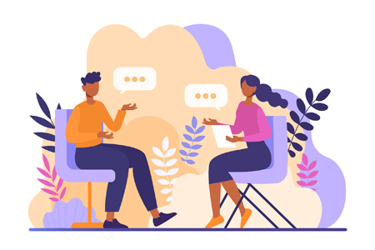Making B2B Human Again!

By Perry Rearick, Chief Editor, Follow Your Buyer

This will seem like a confusing question, but when did B2B marketing and sales become all about business? Yes, I know the B’s stand for business! But businesses are filled with people.
At some point we sucked the life out of our B2B marketing communications. Maybe it’s the way we over automate our outgoing messages or that we’ve turned our marketing departments into impersonal content production centers.
Despite automation domination, I’m optimistic that we can make B2B marketing human again and social media may be part of the solution.
Could social media be the cure?
Should B2B solution providers use LinkeIn as part of their marketing strategy? I’ve spoken to many B2B marketers and salespeople who are motivated by FOMO to have a LinkedIn presence and even more who aren’t sure how to use LinkedIn to support their business.
To best answer the question, ask yourself why you think you should be on LinkedIn. Perhaps you noted that your competitors are there or maybe you’re driven by the immediate feedback it offers.
Here’s the most important question! Are your prospects and customers active on LinkedIn? If the answer is yes and you want another way to engage with them, then you should be there too. Two more questions are also important. Why are they using LinkedIn and how do they participate in that community? The answer to these two questions will help guide how you participate.
Automate what you can and personalize what you should!
HyperSocial is a marketing agency with the goal of changing the way B2B marketing and sales are done. They pride themselves on being nontraditional and I say that with admiration. They are and have always been 100% virtual, there is no hint of a hierarchical structure, and while they serve B2B solution providers, their focus is people.
According to Braden Wallake, the CEO of HyperSocial, they help B2B sellers move beyond the transactional nature of business relationships. He says after all, B2B buyers are “people whose jobs, promotional opportunities, and quality of life are all impacted by the buying decisions they make. These are not emotionless interactions.”
Wallake adds that on LinkedIn, we are more than just positional employees at a company. He says LinkedIn helps us “get to know each other outside of work, inside of work, how we think about the world, how we operate, and what milestone life events we’re experiencing.” It sits at the intersection of our work and personal lives.
How does one effectively work within this human framework? Kellan Smith, a customer success manager at HyperSocial follows a mantra, “automate what you can and personalize what you should.” By the way, he credits his wife with this. Like all sales, B2B sellers have goals, timelines, deadlines, and leads that must be advanced.
Time, says Smith, is one of the most valuable assets for a B2B salesperson. It is also finite and fleeting. Here’s an example. He recommends automating the easy, time-consuming activities like connection requests on LinkedIn. Once a connection is made, it’s time to follow-up in a personal way like you would if you just met them. Think about a recent networking event you attended. Would you meet someone and then immediately pitch them? No, but it happens all the time on LinkedIn.
Getting It To Work
Many formulas and models exist that “promise” increased sales through LinkedIn, but it remains more art than science. Both Braden and Kellan agree that we can intellectually understand the concept of automating what we can and personalizing what we should but making it work is difficult.
You’ve likely noticed the variety of profiles, company pages and posting styles on LinkedIn. Large companies may post with more consistent branding themes and present more formally. Smaller companies and individuals may be more freewheeling. Neither is wrong, or right for that matter.
The official mission statement for LinkedIn is to “connect the world's professionals to make them more productive and successful.” That framework offers a lot of latitude in how we use the platform, and while algorithms will drive content distribution, LinkedIn is ultimately meant to connect people.
Wallake prefers a decentralized approach that gives his own employees complete freedom to be themselves on LinkedIn, especially with their profiles. He encourages conversational messaging between people, suspending any sales talk, and focuses on helping and enriching the lives, both work and personal, of their connections.
If you are a B2B solution provider and your prospects and customers are active on LinkedIn, you should be too. How you make it work is up to you and should reflect your organization’s culture. But it can help us all make B2B marketing and sales more human.
A special thanks to Braden Wallake, CEO, and Kellan Smith, Customer Success Manager, at HyperSocial for sharing their insights with me for this article.
HyperSocial is a B2B marketing agency with the goal of making B2B marketing and sales human. They help companies automate what they can and humanize what they should. Visit them at www.gohypersocial.com
